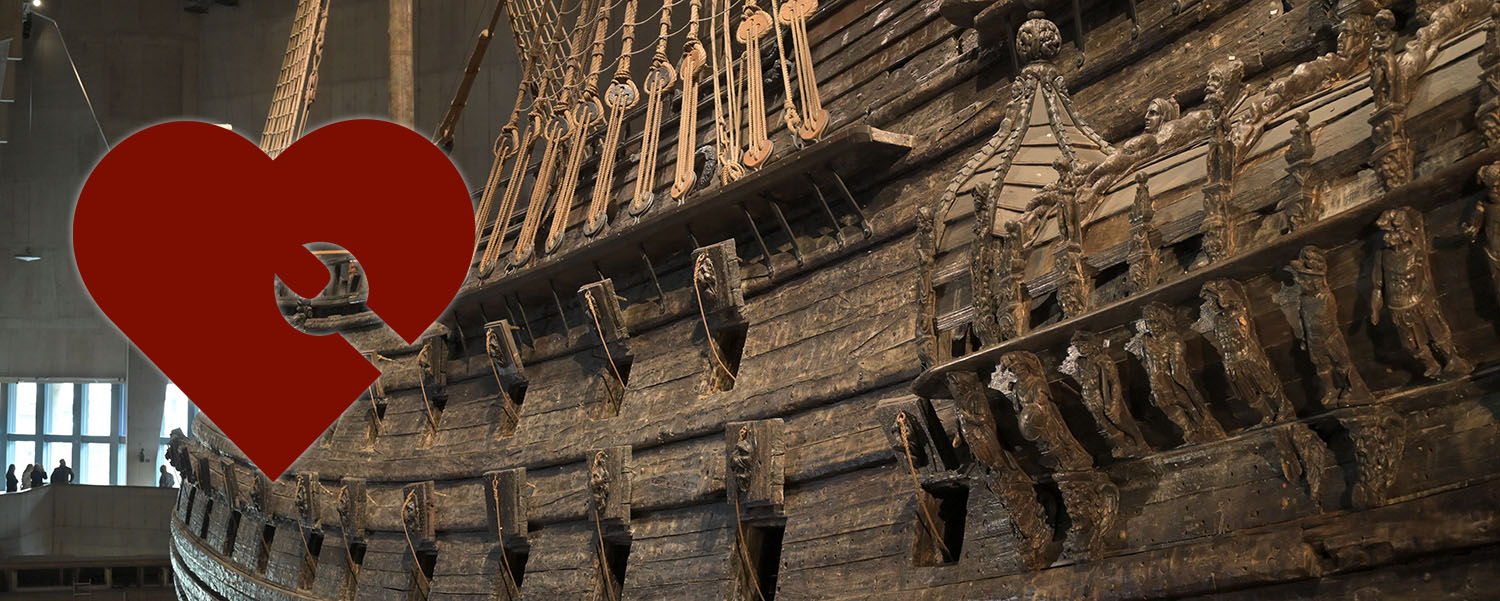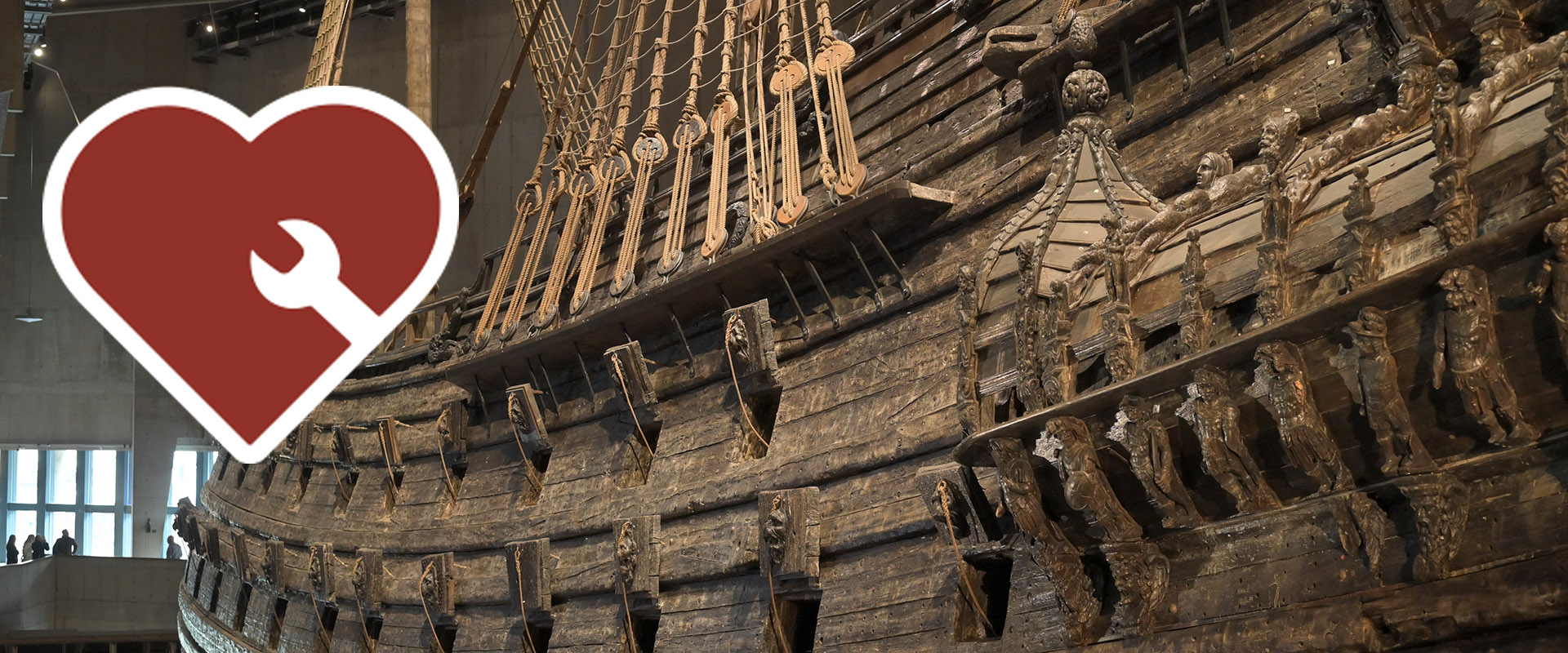On 8 April, construction began on the new support structure for the warship Vasa. The 17 pairs of external cradle elements currently in place will be replaced with 27 specially designed steel cradles, with a joint under the keel.
After more than ten years of research, development, design, construction and advanced testing, it is now finally time to start building Vasa’s new support cradle. The new support structure will brace the ship to slow down movements in the hull, minimise the risk of crack formation and collapse, and ensure that it retains its existing shape. All so that Vasa can be preserved far into the future.
“This support structure we are starting to build consists of several different types of support with cradle elements positioned where they help the ship the most. The support cradle is based entirely on how the ship itself is constructed,” explains Magnus Olofsson, project manager of Support Vasa. He continues:
“It’s a bit like putting together a model kit. The actual work will involve dismantling the existing support structure and installing the new one, piece by piece, according to a rather complicated system – all to avoid movements in the hull. In some cases, the new cradles will be in the exact same spots as the old ones, while in others they will not. The locations of the cradles have been chosen down to the millimetre for the best results.”
Despite its impressive size, Vasa is a very fragile ship. Chemical degradation of the wood has caused the hull, built in oak in the 1620s, to lose much of its strength. There are deformations in the hull, while the ship as a whole moves too much. The movements themselves are small, but they can have major consequences in the long term. The movements in the hull are measured continuously, and the work with the support structure is adjusted to the current condition of the ship.
“Vasa has a tendency to want to heel over and sink ... As she stands in the museum today, she leans slightly towards the port side. The new support structure will prevent further leaning. Eventually, we will also straighten her up a bit, so that she stands more upright inside the museum,” says Magnus Olofsson.
The new support structure is being built in a way that will make it possible to correct the lean of the ship and make subsequent adjustments if necessary.
Vasa currently has difficulty bearing its own weight. This is why an internal support, like a steel skeleton, will eventually be installed in the ship. There are a lot of pieces that need to fall into place, not just in terms of replacing the support structure, but also logistics and transport.
Vasa is a globally unique cultural heritage asset that attracts more than a million visitors from all over the world every year. The Support Vasa project is expected to be completed in 2028 – just in time for the ship's 400th anniversary. The museum will be open as usual throughout the construction period.
The new support structure is the biggest challenge that the Vasa Museum has undertaken since the salvaging and conservation of the ship. The museum needs help to fund construction of the support structure and has therefore launched a fundraising campaign aimed at the general public, donors and sponsors. More information is available on the Vasa Museum website.
The Support Vasa Project
The support structure that has been holding Vasa since the 1960s needs to be replaced, as it is damaging the ship and causing deformations in the hull. This is due to the weakening of the ship’s wood. The entire support structure will be replaced over the course of several years, with construction starting on 8 April 2024. The Vasa Museum will be open as usual throughout the construction period, with a break in the construction work over the summer.
The 17 pairs of external cradle elements currently in place will be replaced with 27 cradles, with a joint under the keel. This will result in the ship being supported at a greater number of points compared to today. Once everything is complete, the external support will be supplemented with an internal support, similar to a skeleton. The internal support will run from the keel all the way up to the upper deck. It will help bear the loads from the decks and beams to slow down the movements in the hull.
The Support Vasa project is led by the Vasa Museum in close cooperation with external consultants.
Project management and construction management: Techtor AB
Design and construction drawings: Camatec Industriteknik AB
Production and assembly: Hjalmarssons Bygg- och Industrisvets AB
Contact
For media inquiries, please contact:
Maria Skuldt, Communications Officer, Vasa Museum
Tel.: + 46 8 519 58 49
E-mail: maria.skuldt@smtm.se

